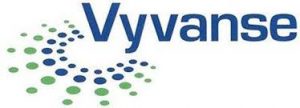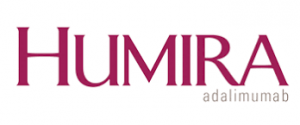Top healthcare brands are successful, but not often for the same reasons. Each brand finds its path to the top in one of only five different ways. The secret to brand success is not just to copy all five of these pathways, but rather to discover the one that best fits your brand’s optimal destiny. Such a process involves a dynamic workshop with a multidisciplinary team to build consensus by evaluating each pathway and plot its course using marketing, clinical development, sales dynamics and communications experts. Consensus is built when one of the five pathways reveals itself as optimal through rigorous examination. The five pathways are as follows: The Creation Brand, The Evolution Brand, The Opportunistic Brand, The Franchise Brand and The Turbo Brand. Let’s take a look at five top healthcare brands by sales and watch how each uses one of these five pathways to achieve their respective successes.
The Creation Brand
 A Creation Brand is a product or service that must first establish an unrecognized need in the marketplace before it can capitalize on helping to fill that need almost exclusively. Without Gatroesophageal Reflux Disease or GERD, Zantac would have never achieved its blockbuster status. Without Erectile Dysfunction or ED, Viagra would never have garnered its legendary success. This is also true for one of the top-selling brands today, Lyrica (pregabalin), a versatile drug that treats a variety of nerve pain. While Lantus vies with a number of competitors on the market for its primary indications, the elevation–or creation–of an unrecognized nerve disorder helped cement its status as one of the top agents in its field. Restless Leg Syndrome, according to WebMD, causes “an uncomfortable, “itchy,” “pins and needles,” or “creepy crawly” feeling in the legs,” and “an irresistible urge to move [one’s] legs to relieve the sensations.” If you doubt that such a condition is real, just ask the nearly 10% of the population that suffers from it or the thousands of doctors who treat it–all due to the focus put on it by Lyrica and its manufacturer, Pfizer. As a Creation Brand, Lyrica was able secure its place among the top selling drugs by finding a pathway that no other brand in its category had achieved, and earns approximately $5.7 billion per year in the US alone. (Note: Restless Leg Syndrome is not an FDA-approved indication for Lyrica.)
A Creation Brand is a product or service that must first establish an unrecognized need in the marketplace before it can capitalize on helping to fill that need almost exclusively. Without Gatroesophageal Reflux Disease or GERD, Zantac would have never achieved its blockbuster status. Without Erectile Dysfunction or ED, Viagra would never have garnered its legendary success. This is also true for one of the top-selling brands today, Lyrica (pregabalin), a versatile drug that treats a variety of nerve pain. While Lantus vies with a number of competitors on the market for its primary indications, the elevation–or creation–of an unrecognized nerve disorder helped cement its status as one of the top agents in its field. Restless Leg Syndrome, according to WebMD, causes “an uncomfortable, “itchy,” “pins and needles,” or “creepy crawly” feeling in the legs,” and “an irresistible urge to move [one’s] legs to relieve the sensations.” If you doubt that such a condition is real, just ask the nearly 10% of the population that suffers from it or the thousands of doctors who treat it–all due to the focus put on it by Lyrica and its manufacturer, Pfizer. As a Creation Brand, Lyrica was able secure its place among the top selling drugs by finding a pathway that no other brand in its category had achieved, and earns approximately $5.7 billion per year in the US alone. (Note: Restless Leg Syndrome is not an FDA-approved indication for Lyrica.)
The Evolution Brand
 Unlike a Creation Brand, an Evolution Brand is a product or service that operates in a well-established field of medicine, so the disease state is known and common protocols are in place. The Evolution Brand has a significant evolutionary advantage that, when isolated and promoted, achieves a pathway to success like no other. Lipitor (atorvastatin) didn’t invent lipid therapy; it just lowered LDL levels better than other like brands. We can find one of today’s top healthcare brands employing an Evolution Brand strategy to find its best destiny.
Unlike a Creation Brand, an Evolution Brand is a product or service that operates in a well-established field of medicine, so the disease state is known and common protocols are in place. The Evolution Brand has a significant evolutionary advantage that, when isolated and promoted, achieves a pathway to success like no other. Lipitor (atorvastatin) didn’t invent lipid therapy; it just lowered LDL levels better than other like brands. We can find one of today’s top healthcare brands employing an Evolution Brand strategy to find its best destiny.
CHADD, the national resource on ADHD, estimates the prevalence of the disorder in children 18 and younger at 7.2% of the population. One of the most common treatments for this disorder are amphetamines, generic agents that cost pennies on the dollar. However, as the name might imply, the abuse potential of such agents is significant as the pills can be crushed and ingested to achieve a “speed” high. Enter Vyvanse, or lisdexamphetamine, a variation on amphetamines using an evolutionary technology that makes it a pro-drug. Pro-drugs like Vyvanse do not become psychoactive until they pass through the digestive system, at once activating the amphetamine component at a safe distance from abuse potential while mitigating the “high.” Vyvance used the Evolution Brand pathway to secure $3.1 billion annually in US sales.
The Opportunistic Brand
 Like The Evolution Brand, The Opportunistic brand is a product or service that operates in a well-established medical category. However, The Opportunistic Brand differs by offering one of many types of solutions to the treatment dynamic and must find an “opportunity” with which it can triumph. Effexor (venlafaxine) was a tricyclic antidepressant launching into an SSRI (selective serotonin reuptake inhibitor) world. By rebranding its mechanism of action (MOA) to SNRI (serotonin/norepinephrin reuptake inhibitor), Effexor leveraged its dual MOA and created an opportunity to succeed where SSRIs could not: moderate-to-severe depression. Likewise, top-selling Januvia (sitagliptin)–$4.8 billion annually in the US–managed to create its “opportunity” in the super-competitive diabetes space by leveraging its unique MOA. Januvia works by increasing levels of natural substances called incretins, which help to control blood sugar by increasing insulin release, especially after a meal. In a world where insulin dominates, Januvia found its opportunistic pathway to success.
Like The Evolution Brand, The Opportunistic brand is a product or service that operates in a well-established medical category. However, The Opportunistic Brand differs by offering one of many types of solutions to the treatment dynamic and must find an “opportunity” with which it can triumph. Effexor (venlafaxine) was a tricyclic antidepressant launching into an SSRI (selective serotonin reuptake inhibitor) world. By rebranding its mechanism of action (MOA) to SNRI (serotonin/norepinephrin reuptake inhibitor), Effexor leveraged its dual MOA and created an opportunity to succeed where SSRIs could not: moderate-to-severe depression. Likewise, top-selling Januvia (sitagliptin)–$4.8 billion annually in the US–managed to create its “opportunity” in the super-competitive diabetes space by leveraging its unique MOA. Januvia works by increasing levels of natural substances called incretins, which help to control blood sugar by increasing insulin release, especially after a meal. In a world where insulin dominates, Januvia found its opportunistic pathway to success.
The Franchise Brand
 A Franchise Brand is a product or service that markets to many different medical specialists for a variety of different conditions. Botox (botulinum toxin) is perhaps the most recognized Franchise Brand in the world as it treats Migraines, Hyperactive Sweating, Overactive Bladder, Post-stroke spasticity and numerous other conditions with a single brand identity despite dosing differences. Likewise, top-selling Humira (adalimumab) pursued a Franchise Brand strategy and–instead of creating new brand identities for each indication–elected to have one central brand stand for its “franchise” of indications: rheumatoid arthritis and Crohn’s disease are just two. Humira pursued a Franchise Brand strategy and enjoys US annual sales of $13.6 billion.
A Franchise Brand is a product or service that markets to many different medical specialists for a variety of different conditions. Botox (botulinum toxin) is perhaps the most recognized Franchise Brand in the world as it treats Migraines, Hyperactive Sweating, Overactive Bladder, Post-stroke spasticity and numerous other conditions with a single brand identity despite dosing differences. Likewise, top-selling Humira (adalimumab) pursued a Franchise Brand strategy and–instead of creating new brand identities for each indication–elected to have one central brand stand for its “franchise” of indications: rheumatoid arthritis and Crohn’s disease are just two. Humira pursued a Franchise Brand strategy and enjoys US annual sales of $13.6 billion.
The Turbo Brand
 A Turbo Brand gets its name from a device inside some car engines that injects more air into the pistons for a greater explosion and subsequent power boost. Turbo Brands find their best destiny not in what they do by themselves, but in how they enhance the performance of other brands. Gemzar (gemcitabine) by itself is a decent agent in cancer, but when combined with other, more toxic chemotherapies, finds its best destiny as a team player, boosting the overall efficacy of the cocktail. Similarly, Neulasta (pegfilgrastim) doesn’t kill cancer, but rather enables the body to withstand high doses of chemotherapy by boosting the body’s white blood cell immune defense. Neulasta embraces a Turbo Brand strategy and is one of the top selling agents in oncology with US annual sales of $4.2 billion.
A Turbo Brand gets its name from a device inside some car engines that injects more air into the pistons for a greater explosion and subsequent power boost. Turbo Brands find their best destiny not in what they do by themselves, but in how they enhance the performance of other brands. Gemzar (gemcitabine) by itself is a decent agent in cancer, but when combined with other, more toxic chemotherapies, finds its best destiny as a team player, boosting the overall efficacy of the cocktail. Similarly, Neulasta (pegfilgrastim) doesn’t kill cancer, but rather enables the body to withstand high doses of chemotherapy by boosting the body’s white blood cell immune defense. Neulasta embraces a Turbo Brand strategy and is one of the top selling agents in oncology with US annual sales of $4.2 billion.
